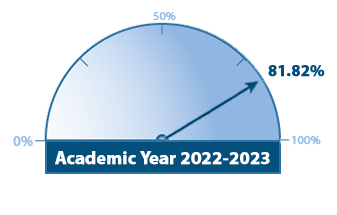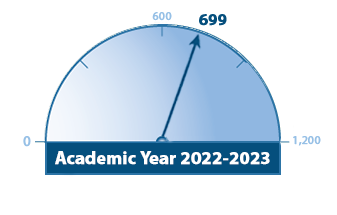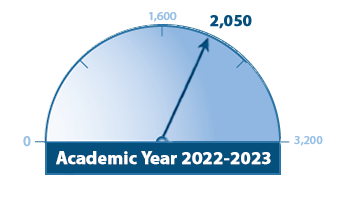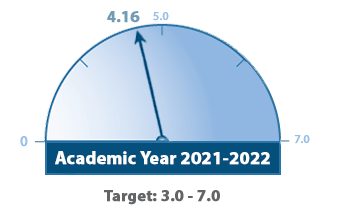Northern Wyoming Community College District Scorecard
Our Scorecard comprises seven essential high level measures of institutional health that also help track progress on our Strategic Goals. The goal of the Scorecard is to give a snapshot at a point in time. These high-level measures are produced by combining important data used in department and institution decision-making.
Our strategic goals focus on two areas:
- Student success
- Organizational health
NWCCD Scorecard
Student Learning
 Student learning is measured by the Enrollee Course Success rate, calculated as the percentage of students enrolled in credit-bearing, college-level courses who earn a grade of A, B, C or S. We serve a wide variety of individuals, from those ambitiously pursuing academic achievement and higher learning to those taking a single course to improve a work-related skill or for personal enrichment, and this measure captures the effort of all these categories. Student learning is measured by the Enrollee Course Success rate, calculated as the percentage of students enrolled in credit-bearing, college-level courses who earn a grade of A, B, C or S. We serve a wide variety of individuals, from those ambitiously pursuing academic achievement and higher learning to those taking a single course to improve a work-related skill or for personal enrichment, and this measure captures the effort of all these categories. |
Certificates & Degrees Awarded
 Student Success is defined as earning a degree or certificate; students may earn multiple awards in the same year. This measure is calculated annually and includes all awards from Summer, Fall, and Spring Semesters. Student Success is defined as earning a degree or certificate; students may earn multiple awards in the same year. This measure is calculated annually and includes all awards from Summer, Fall, and Spring Semesters. |
Annual Degree Seeking Headcount
 Headcount is defined as annual (summer, spring, and fall terms) degree-seeking unduplicated headcount enrolled in undergraduate courses as of the 12% course completion date. Headcount is defined as annual (summer, spring, and fall terms) degree-seeking unduplicated headcount enrolled in undergraduate courses as of the 12% course completion date. |
Composite Financial Indicator
 Overall Financial Health of the District is measured by the Composite Financial Indicator (CFI), which is made up of four weighted financial ratios. Our current CFI is 4.16, above our desired target of 3.0. Adjusting for pledge payments that pay for recorded debt, our CFI rises to 5.56, within our target range of 3.0 to 7.0. Our 17-year average CFI is 3.88 at the lower end of our target, which reflects assumption of appropriate risks, taking advantages of opportunities, and meeting emerging needs. Our most recent CFI (2021-2022) decreased to 4.16 because of debt repayments for capital construction projects. The debt service is fully paid for by a private grant. Overall Financial Health of the District is measured by the Composite Financial Indicator (CFI), which is made up of four weighted financial ratios. Our current CFI is 4.16, above our desired target of 3.0. Adjusting for pledge payments that pay for recorded debt, our CFI rises to 5.56, within our target range of 3.0 to 7.0. Our 17-year average CFI is 3.88 at the lower end of our target, which reflects assumption of appropriate risks, taking advantages of opportunities, and meeting emerging needs. Our most recent CFI (2021-2022) decreased to 4.16 because of debt repayments for capital construction projects. The debt service is fully paid for by a private grant. |

